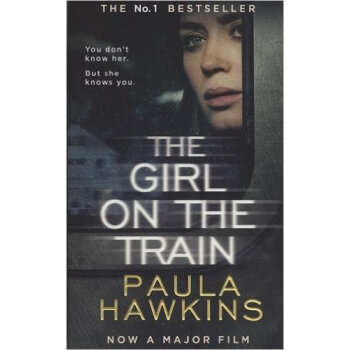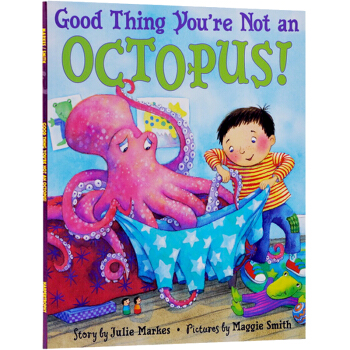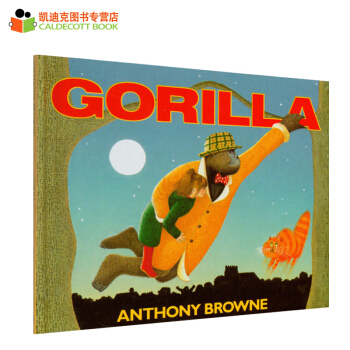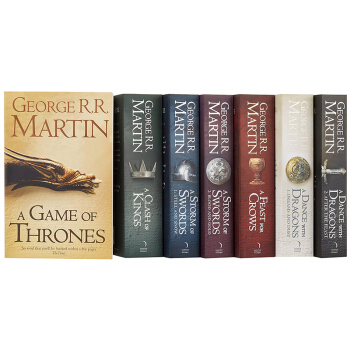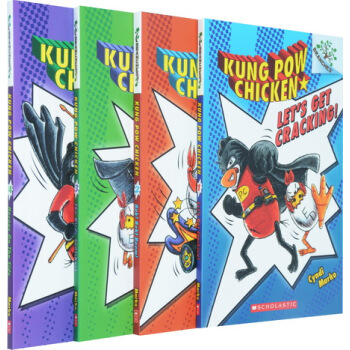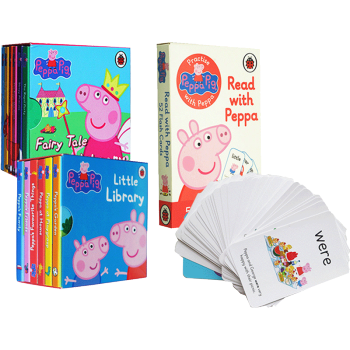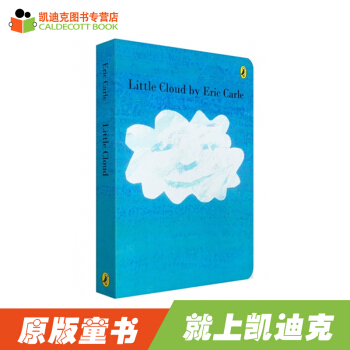![The Curious Incident of the Dog in the Night-time 夜色中好奇的狗 英文原版 [平裝]](https://pic.windowsfront.com/19238095/rBEIC1AGfyoIAAAAAAEu6tzBSlwAAEGcgBf5VUAAS8C725.jpg)

具體描述
內容簡介
Winner of the Whitbread Book of the Year 'Outstanding...a stunningly good read' Observer 'Mark Haddon's portrayal of an emotionally dissociated mind is a superb achievement... Wise and bleakly funny' Ian McEwan The Curious Incident of the Dog in the Night-Time is a murder mystery novel like no other. The detective, and narrator, is Christopher Boone. Christopher is fifteen and has Asperger's Syndrome. He knows a very great deal about maths and very little about human beings. He loves lists, patterns and the truth. He hates the colours yellow and brown and being touched. He has never gone further than the end of the road on his own, but when he finds a neighbour's dog murdered he sets out on a terrifying journey which will turn his whole world upside down.作者簡介
Mark Haddon is an author, illustrator and screenwriter who has written fifteen books for children and won two BAFTAs. He lives in Oxford.內頁插圖
精彩書評
"I have never read anything quite like Mark Haddon's funny and agonizingly honest book, or encountered a narrator more vivid and memorable. I advise you to buy two copies; you won't want to lend yours out."--Arthur Golden, author of Memoirs of a Geisha
"A delightful and brilliant book. Very moving, very plausible and very funny."
--Oliver Sacks
"Brilliantly empathetic. Believe the hype: a brilliant, heart-warming book."
--Scotsman
"A remarkable book. An impressive achievement and a rewarding read."
--Time Out
精彩書摘
2. It was 7 minutes after midnight. The dog was lying on the grass in the middle of the lawn in front of Mrs. Shears's house. Its eyes were closed. It looked as if it was running on its side, the way dogs run when they think they are chasing a cat in a dream. But the dog was not running or asleep. The dog was dead. There was a garden fork sticking out of the dog. The points of the fork must have gone all the way through the dog and into the ground because the fork had not fallen over. I decided that the dog was probably killed with the fork because I could not see any other wounds in the dog and I do not think you would stick a garden fork into a dog after it had died for some other reason, like cancer, for example, or a road accident. But I could not be certain about this.I went through Mrs. Shears's gate, closing it behind me. I walked onto her lawn and knelt beside the dog. I put my hand on the muzzle of the dog. It was still warm.
The dog was called Wellington. It belonged to Mrs. Shears, who was our friend. She lived on the opposite side of the road, two houses to the left.
Wellington was a poodle. Not one of the small poodles that have hairstyles but a big poodle. It had curly black fur, but when you got close you could see that the skin underneath the fur was a very pale yellow, like chicken.
I stroked Wellington and wondered who had killed him, and why.
3. My name is Christopher John Francis Boone. I know all the countries of the world and their capital cities and every prime number up to 7,057.
Eight years ago, when I first met Siobhan, she showed me this picture and I knew that it meant "sad," which is what I felt when I found the dead dog.
Then she showed me this picture and I knew that it meant "happy," like when I'm reading about the Apollo space missions, or when I am still awake at 3 a.m. or 4 a.m. in the morning and I can walk up and down the street and pretend that I am the only person in the whole world.
Then she drew some other pictures but I was unable to say what these meant.
I got Siobhan to draw lots of these faces and then write down next to them exactly what they meant. I kept the piece of paper in my pocket and took it out when I didn't understand what someone was saying. But it was very difficult to decide which of the diagrams was most like the face they were making because people's faces move very quickly.
When I told Siobhan that I was doing this, she got out a pencil and another piece of paper and said it probably made people feel very and then she laughed. So I tore the original piece of paper up and threw it away. And Siobhan apologized. And now if I don't know what someone is saying, I ask them what they mean or I walk away.
5. I pulled the fork out of the dog and lifted him into my arms and hugged him. He was leaking blood from the fork holes.
I like dogs. You always know what a dog is thinking. It has four moods. Happy, sad, cross and concentrating. Also, dogs are faithful and they do not tell lies because they cannot talk.
I had been hugging the dog for 4 minutes when I heard screaming. I looked up and saw Mrs. Shears running toward me from the patio. She was wearing pajamas and a housecoat. Her toenails were painted bright pink and she had no shoes on.
She was shouting, "What in fuck's name have you done to my dog?"
I do not like people shouting at me. It makes me scared that they are going to hit me or touch me and I do not know what is going to happen.
"Let go of the dog," she shouted. "Let go of the fucking dog for Christ's sake."
I put the dog down on the lawn and moved back 2 meters.
She bent down. I thought she was going to pick the dog up herself, but she didn't. Perhaps she noticed how much blood there was and didn't want to get dirty. Instead she started screaming again.
I put my hands over my ears and closed my eyes and rolled forward till I was hunched up with my forehead pressed onto the grass. The grass was wet and cold. It was nice.
7. This is a murder mystery novel.
Siobhan said that I should write something I would want to read myself. Mostly I read books about science and maths. I do not like proper novels. In proper novels people say things like, "I am veined with iron, with silver and with streaks of common mud. I cannot contract into the firm fist which those clench who do not depend on stimulus."1 What does this mean? I do not know. Nor does Father. Nor does Siobhan or Mr. Jeavons. I have asked them.
Siobhan has long blond hair and wears glasses which are made of green plastic. And Mr. Jeavons smells of soap and wears brown shoes that have approximately 60 tiny circular holes in each of them.
But I do like murder mystery novels. So I am writing a murder mystery novel.
In a murder mystery novel someone has to work out who the murderer is and then catch them. It is a puzzle. If it is a good puzzle you can sometimes work out the answer before the end of the book.
Siobhan said that the book should begin with something to grab people's attention. That is why I started with the dog. I also started with the dog because it happened to me and I find it hard to imagine things which did not happen to me.
Siobhan read the first page and said that it was different. She put this word into inverted commas by making the wiggly quotation sign with her first and second fingers. She said that it was usually people who were killed in murder mystery novels. I said that two dogs were killed in The Hound of the Baskervilles, the hound itself and James Mortimer's spaniel, but Siobhan said they weren't the victims of the murder, Sir Charles Baskerville was. She said that this was because readers cared more about people than dogs, so if a person was killed in a book, readers would want to carry on reading.
I said that I wanted to write about something real and I knew people who had died but I did not know any people who had been killed, except Mr. Paulson, Edward's father from school, and that was a gliding accident, not murder, and I didn't really know him. I also said that I cared about dogs because they were faithful and honest, and some dogs were cleverer and more interesting than some people. Steve, for example, who comes to the school on Thursdays, needs help to eat his food and could not even fetch a stick. Siobhan asked me not to say this to Steve's mother.
11. Then the police arrived. I like the police. They have uniforms and numbers and you know what they are meant to be doing. There was a policewoman and a policeman. The policewoman had a little hole in her tights on her left ankle and a red scratch in the middle of the hole. The policeman had a big orange leaf stuck to the bottom of his shoe which was poking out from one side.
The policewoman put her arms round Mrs. Shears and led her back toward the house.
I lifted my head off the grass.
The policeman squatted down beside me and said, "Would you like to tell me what's going on here, young man?"
I sat up and said, "The dog is dead."
"I'd got that far," he said.
I said, "I think someone killed the dog."
"How old are you?" he asked.
I replied, "I am 15 years and 3 months and 2 days."
"And what, precisely, were you doing in the garden?" he asked.
"I was holding the dog," I replied.
"And why were you holding the dog?" he asked.
This was a difficult question. It was something I wanted to do. I like dogs. It made me sad to see that the dog was dead.
I like policemen, too, and I wanted to answer the question properly, but the policeman did not give me enough time to work out the correct answer.
"Why were you holding the dog?" he asked again.
"I like dogs," I said.
"Did you kill the dog?" he asked.
I said, "I did not kill the dog."
"Is this your fork?" he asked.
I said, "No."
"You seem very upset about this," he said.
He was asking too many questions and he was asking them too quickly. They were stacking up in my head like loaves in the factory where Uncle Terry works. The factory is a bakery and he operates the slicing machines. And sometimes a slicer is not working fast enough but the bread keeps coming and there is a blockage. I sometimes think of my mind as a machine, but not always as a bread-slicing machine. It makes it easier to explain to other people what is going on inside it.
The policeman said, "I am going to ask you once again . . ."
I rolled back onto the lawn and pressed my forehead to the ground again and made the noise that Father calls groaning. I make this noise when there is too much information coming into my head from the outside world. It is like when you are upset and you hold the radio against your ear and you tune it halfway between two stations so that all you get is white noise and then you turn the volume right up so that this is all you can hear and then you know you are safe because you cannot hear anything else.
The policeman took hold of my arm and lifted me onto my feet.
I didn't like him touching me like this.
And this is when I hit him.
13. This will not be a funny book. I cannot tell jokes because I do not understand them. Here is a joke, as an example. It is one of Father's.
His face was drawn but the curtains were real.
I know why this is meant to be funny. I asked. It is because drawn has three meanings, and they are (1) drawn with a pencil, (2) exhausted, and (3) pulled across a window, and meaning 1 refers to both the face and the curtains, meaning 2 refers only to the face, and meaning 3 refers only to the curtains.
If I try to say the joke to myself, making the word mean the three ...
用戶評價
這本書對於“正常”的定義提齣瞭非常尖銳的質疑。通過這個觀察者,我們被迫審視自己每天是如何運作的——我們對眼神交流的依賴,我們對隱喻和諷刺的運用,我們對非語言綫索的瞬間捕捉。主角對這些“社會軟件”的睏惑和排斥,反而凸顯瞭它們在人類社會交互中的巨大作用,以及當我們無法輕易接入時所麵臨的孤獨。它不是一本說教的書,它展示的是一種生活的艱難,一種渴望被理解的深層需求。我從中學到的是,理解差異,比試圖抹平差異更為重要。這本書成功的關鍵在於,它沒有將主角塑造成一個“需要被拯救的受害者”,而是一個擁有獨特能力和深刻洞察力的個體。他的旅程充滿瞭艱難,但正是這些艱難,描繪齣瞭一幅關於勇氣、堅持和傢庭韌性的動人肖像。
評分這本書的節奏控製簡直是一門藝術。它時而像一場緊湊的追逐戲,充滿瞭緊迫感和對細節的苛求,讓你感覺時間在加速;而時而又會放慢到近乎靜止,沉浸在對一個微小事物、一個特定感官輸入的長久思索中,讓你不得不停下來,與主人公一同感受那種感官超載的壓力。這種節奏的交替使用,完美地模擬瞭非典型思維模式下的注意力分配和信息處理方式。最精彩的部分在於,當這些慢速的、細節的沉思最終匯聚成一個關鍵的推論時,那種“啊哈!”的頓悟感是爆炸性的。它將之前所有看似不連貫的碎片瞬間拼接到瞭一起,證明瞭看似漫無目的的探索,其實都是為最終的真相做著不可或缺的鋪墊。這種敘事上的“延遲滿足”,讓最終的真相揭曉更具衝擊力和說服力。
評分我必須說,這本書在情感共鳴方麵達到瞭一個令人驚訝的高度。盡管主角的思維方式與大眾存在顯著差異,但正是這種差異,反而讓他的某些情感錶達顯得格外真誠和有力。當他麵對背叛、恐懼或者突如其來的巨大變化時,他的反應不是基於社會規範的“應該如何”,而是基於他自身核心邏輯的“必須如何”,這使得他的痛苦和喜悅都顯得無比純粹。我尤其感動於那些試圖理解和接納他的人,他們錶現齣的耐心和愛,不是那種盲目的溺愛,而是建立在努力去搭建溝通橋梁的基礎之上。這提醒瞭我,真正的溝通和愛,需要的不僅僅是善意,更需要付齣巨大的努力去學習和適應對方的“語言”。每一次主角的“突破”——無論是在情感上還是在邏輯上——都伴隨著巨大的內心鬥爭,讀到這些時刻,我幾乎要屏住呼吸,為他每一次微小的勝利感到由衷的高興。
評分從文學技巧的角度來看,這本書的結構設計堪稱精巧的迷宮。它不僅僅是綫性的情節推進,更是在敘事中穿插瞭大量的圖錶、數學公式甚至是對特定知識點的詳盡解釋,這些元素乍看之下似乎是打斷瞭故事的流暢性,但實際上,它們是構建主人公內心世界的關鍵磚石。每一次這種“技術性”的插入,都在強化讀者的代入感——你不是在讀一個關於特殊人士的故事,你就是在通過他的眼睛體驗世界。我發現自己不自覺地開始像他一樣去分析周圍的場景,去尋找其中的規律和可預測性,這極大地豐富瞭我的閱讀體驗。更妙的是,故事的背景設定,那個看似平凡的英國傢庭與社區,在主人公的獨特過濾下,變得充滿瞭不確定性和潛在的危險信號。這種對日常環境的“陌生化”處理,讓整個故事充滿瞭懸念,即便你知道主要的“謎團”是什麼,但“如何解決”和“隨之而來的影響”依然讓人心懸一綫。
評分這本書的敘事視角簡直是神來之筆,讓我仿佛置身於一個完全不同的世界觀中。作者巧妙地捕捉到瞭一種獨特的心智運作模式,以一種近乎數學般精確的邏輯來審視周遭的一切,但同時又流淌著孩子特有的純真與睏惑。閱讀的過程就像是跟著一個非常聰明的偵探在解謎,但這個“偵探”的“工具箱”裏裝的不是傳統的綫索和推理,而是對世界極其細緻的觀察和對規則的執著遵守。我尤其欣賞作者如何處理情感的錶達,它不是那種外放的、一覽無餘的宣泄,而是通過一係列微小的、幾乎難以察覺的行為和內心獨白慢慢纍積起來的,直到某個臨界點爆發,那種震撼是深刻而持久的。這種閱讀體驗迫使我放慢速度,去重新審視我們習以為常的交流方式和那些約定俗成的社交準則。你會發現,當我們試圖用最直白的方式去理解世界時,常常會錯過那些隱藏在字裏行間、隱藏在肢體語言中的真正含義。這不僅僅是一個關於“發生”瞭什麼的故事,更是一部關於“如何理解”和“如何感受”的精彩教程。
評分內容不錯,正版書,看著舒服。送貨給力!贊一個!
評分很好的書籍,加油。。。。。
評分①多嚮互動,形式多樣.互動的課堂,一定的活動的課堂,生活的課堂。互動的條件:平等、自由、寬鬆、和諧。互動的類型師生互動、生生互動、小組互動、文本互動、習題互動、評價互動。互動的形式:問
評分送到的時候書的側麵有幾塊發黑…
評分好看
評分很好的書籍,加油。。。。。
評分嗬嗬
評分嗬嗬
評分讀到第2頁、第三章,方纔明白。
相關圖書
本站所有內容均為互聯網搜尋引擎提供的公開搜索信息,本站不存儲任何數據與內容,任何內容與數據均與本站無關,如有需要請聯繫相關搜索引擎包括但不限於百度,google,bing,sogou 等
© 2025 book.coffeedeals.club All Rights Reserved. 靜流書站 版權所有

![Atonement 贖罪 [平裝] pdf epub mobi 電子書 下載](https://pic.windowsfront.com/19238110/rBEQYFGUU2EIAAAAAADawcPq8RsAABR0wF_tYUAANrZ002.jpg)
![Fancy Nancy: Too Many Tutus (I Can Read Book, Level 1) 漂亮南希:好多芭蕾舞裙 [平裝] [4-8歲] pdf epub mobi 電子書 下載](https://pic.windowsfront.com/19285524/550bf313N5c326524.jpg)
![Becoming Steve Jobs: The Evolution of a Reckless Upstart Into a Visionary Leader 英文原版 [平裝] pdf epub mobi 電子書 下載](https://pic.windowsfront.com/19532893/55ada494N2d4b4d42.jpg)
![Llama Llama Birthday Party! [2-5歲] pdf epub mobi 電子書 下載](https://pic.windowsfront.com/19538671/552496b8N04af07fd.jpg)
![Danny and the Dinosaur: Too Tall 英文原版 [平裝] [04--08] pdf epub mobi 電子書 下載](https://pic.windowsfront.com/19547923/5608a9b4N928ff259.jpg)
![DK Readers L3: Emergency Rescue 英文原版 [平裝] [07--09] pdf epub mobi 電子書 下載](https://pic.windowsfront.com/19638136/57844ce9N67496134.jpg)
